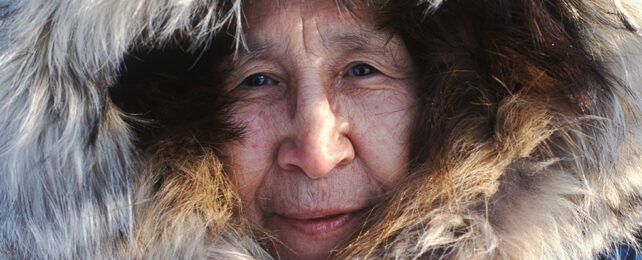Hunter-gatherer roles in human society are not nearly as gendered as anthropologists and archaeologists have traditionally believed, with narratives of 'man the hunter' and 'woman the gatherer' crumbling in the face of new evidence.
In recent years, ancient sites around the world strongly suggest that women have been fishing, hunting big game, and going to war alongside men for many millennia.
In fact, they still are.
Despite what modern gender stereotypes would have you believe, a new analysis of a broad range of foraging societies within the past century has revealed a number of their hunters were female.
The data review, led by Abigail Anderson of Seattle Pacific University, considers 63 modern foraging societies, including those in the Americas, Africa, Australia, Asia, and the Oceanic region. Close to 80 percent of those societies show evidence of female hunting in ethnographic reports from the past 100 years.
In the majority of those cases, there was clear documentation describing women stalking and hunting game intentionally, not just killing an animal if the opportunity arose. Among societies where hunting was the most important source of food, women actively participated in hunting 100 percent of the time.
Instead of staying behind with the children, female hunters often brought kids as young as infants along for the ride. What's more, childcare does not suffer as a result of female hunting.
"The idea that women are hindered by childcare and thus cannot hunt is an area where increasing data collection and thoughtful interpretation is lending a much richer lens to our understanding of human mobility strategies," the researchers explain.
"Women in foraging societies across the world historically participated and continue to participate in hunting regardless of child-bearing status."
The more that experts search for signs of men as exclusive stalkers and hunters of prey, first proposed by anthropologists in the 1960s, the more spurious it seems.
Judging by the evidence, women have played an instrumental yet historically overlooked role in human survival, providing much of the protein eaten by foraging societies while also rearing the next generation.
Compared to male hunters in these same communities, female hunters often employ their own unique strategies and toolkits for capturing and killing prey.
The hunting tools used by Agta women in the Phillippines, for instance, are "remarkably different to Agta men", who tend to stick to bows and arrows. Women are more likely to mix it up with knives, and they tend to hunt in teams during the day, as opposed to alone at night, like many of the men.
"In addition to weapon choices, women further employ a greater flexibility of hunting strategies compared to men," the researchers note.
"For example, women hunt with a variety of partners, including their husbands, other women, children, dogs, as well as hunting alone. In contrast, men primarily hunt alone, with a single partner (their wife), or with a dog."
Women hunters also show specialization in what prey they target.
In the Tiwi society of Australia, for instance, women regularly hunt small animals, while men hunt larger ones. In the Matses society of the Peruvian Amazon, meanwhile, women are specialized in hunting large game with sticks and machetes.
A big reason these cases were overlooked has to do with scientific bias.
Because of modern gender stereotypes, for instance, archaeologists have often assumed that human remains found near Viking weapons were male. Recent analyses, however, have found that's not always the case. Female warriors may have existed, if in far fewer numbers.
"[R]esearcher bias shapes science's interpretation of data, and it behooves each generation of scientists to ensure that paradigms fit the existing data," Andersen and her colleagues write.
"[T]he number of anecdotes on females taking up weapons and tools interpreted as "violent" is extensive across time as well as space, making such examples more of a pattern of female behavior than anecdotal."
Women, it would seem, have been juggling the role of hunter, gatherer, fisher, and mother from the very beginning.
The study was published in PLOS ONE.
